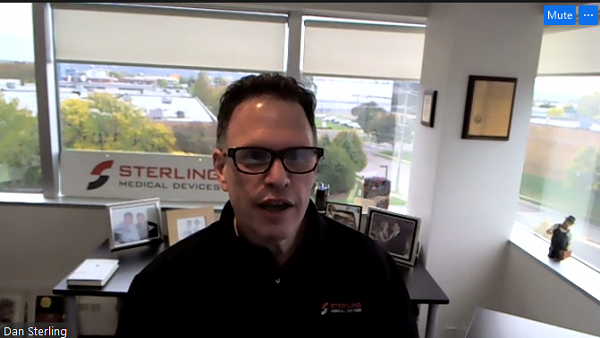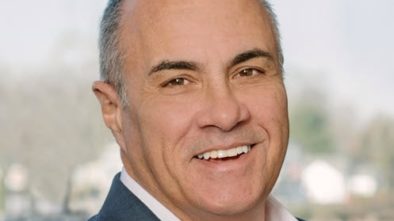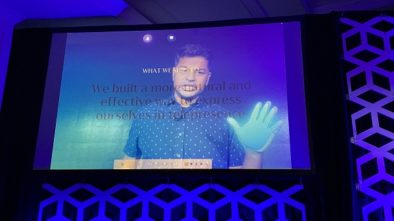Here in New Jersey, Sterling Medical Devices Makes Med Tech to Order
Suppose you are developing an implant that involves both hardware and software, or an external device for diagnosing a disease or providing therapy. Or perhaps you are developing software that can be hosted on a variety of platforms. If the devices are used in or for humans, Sterling Medical Devices (Moonachie) can help you out.
That’s according to Dan Sterling, founder, president and CEO. Sterling Medical Devices began as a consulting operation in 1998, but really got started as a company in 2004, he told NJTechWeekly.com. “We’re almost 100 people now, and I’m not doing consulting myself anymore. I occasionally get involved in projects, but from an extremely high level. For me it’s been a real journey.”
Here are some of the products and projects the company has recently worked on:
- An augmented reality surgical device with an accompanying 3D display monitor that will be used to reduce the incision scar size, allowing medical professionals to operate in delicate areas. As usual, the idea came from the client, and the company contributed both technical-implementation know-how and help in getting the device through the U.S. Food and Drug Administration (FDA) compliance process. The work involved programming the field programmable gate array (FPGA), which is a pseudo software and hardware circuit. “It’s a device that’s programmed, but once it’s programmed, it’s a very high-speed device. And it’s instrumental in that kind of image processing.”
- An at-home doctor-regulated medication dispenser with a two-step identification process. This cellular-equipped, registration-required device is designed to share usage data with medical professionals and to alert pharmacies of necessary prescription refills. “We’ve actually been very successful helping our customers develop these kinds of telehealth solutions,” Sterling said. “One of our prior clients for whom we developed a device, it was glucose related, actually just struck a huge deal in the market.”
- An encrypted cybersecurity application the team is developing simultaneously, to protect medical data on a corporate computer system. The purpose of the coded system is to prevent medical hacking, while safeguarding vulnerable medical information and personal data. “This is [for] a large strategic medical-device corporation that has medical information stored. You can imagine that they really need to protect this information. So, they hired us to review their security and then to put a system in place to protect it, according to the most recent standards and industry best practices. We are hardening their systems so that nobody can hack in and get their medical data.”
- The development of Healight Platform Technology, a potential treatment for critically ill patients infected with coronavirus and other infections. Earlier this year, the company announced that it was working on this project with Cedars-Sinai (Los Angeles) and Aytu BioScience, an Englewood, Colorado specialty pharmaceutical company. Sterling Medical Devices has also collaborated with another New Jersey company, HS Design (Morristown), which did the front-end design work. The device is now in investigational trials.
We asked Sterling how his company had evolved since it began, in 1998. He answered, “The challenge for us … over that time, with that growth, was to make sure we have really great technical leadership on our teams. And excellent project management. Clients, obviously, want the quality in the work. That’s a given. But they also consider quality to be sticking to schedules and budgets. We really try to provide great transparency into what we are doing. It’s collaborative, as we try to meet all those expectations.
“In the beginning of our company, we only did software. But we learned that there are things we can do for our clients that will add value, and that the synergies make sense. So since then, we’ve added electronic design and mechanical design. We’re expanding in both directions, both to the front end of analyzing user needs and developing product specifications, all the way to the back end, where we just brought in regulatory experts to help shepherd the whole process through. We’re also doing some clinical consulting to make sure these devices can actually get into a study.”
Sterling said that the secret sauce to his growth as a leader is “not internalizing the stress.” He also noted that “figuring out the right times to jump to that next level and how to make those new strategic hires has been crucial. But I’ve been lucky that I’ve chosen the right times, and I brought in the right people.”
The latest high-profile hires at Sterling Medical Devices were Carrie Hetrick as director of regulatory affairs and Tara Miller as manager of human factors and clinical. They were brought in to establish the company’s Regulatory Affairs Department, which will provide strategic guidance and collaboration regarding applicable regulatory requirements and implement industry best practices across the board.
Asked how the company was fairing during COVID-19, Sterling said that he wasn’t sure if it was a strategic choice, but as the company is in the Northeast, and there are frequent interruptions from snowstorms and other weather events, Sterling Medical Devices was prepared to go virtual. “Part of our value promise to our clients is that we’re not going to use a hurricane or a snowstorm to say, ‘we can’t get your job done.’ So, we have an infrastructure that allows everybody to work from home. When COVID happened, it was pretty seamless to get everybody home and working effectively, collaborating, even though it was remote. That was all pretty good,” he said.
“The hardware people were the ones that had to keep coming in. But we’ve got enough square footage that we could maintain social distancing and a pretty comfortable work environment for the people who are here.”
Sterling added that when the pandemic first hit, he was fearful of a downturn in business, but “it turned out that only two of our clients had really any problem. And that was because they were involved in devices for elective surgery, and had to shut down for a while. But those have actually both came back since. And I would say we’ve had additional demand it offset those. So, things kind of went flat for a couple of months, but it’s been a very strong year otherwise.”




